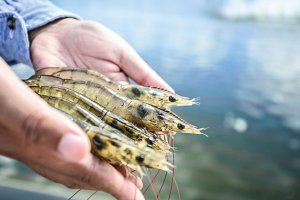Many veterinary antibiotics are applied via the waterline, where they are dosed in combination with other feed additives. Amongst those are mixtures of secondary plant compounds with a proven antimicrobial efficacy against veterinary pathogenic bacteria. However, little research has been done to evaluate any effect that antibiotics and phytogenics may have on each other. A possible influence of phytogenics on the efficacy of antibiotics through the combined administration would require a change in application recommendations of antibiotics and phytogenic feed additives. In the case of no interaction, no changes would be necessary. If they were to interact in a positive way, the dosages could be lowered and if they interact in a negative way, a combined application would be avoided.
Antibiotics and SPC’s in co-incubation
There are different groups of antibiotics depending on the chemical structure and on the pathogen they target. Some impair the cell wall or the cytoplasmic membrane (polymyxins, ß-lactam antibiotics) and some affect protein synthesis (macrolides, Chloramphenicol, Lincospectin, tetracyclines, aminoglycosides). Others compromise DNA and RNA synthesis (fluorchinolones, ansamycines) and some disturb the metabolism of e.g. folic acid (Trimethoprim).
The intention of a trial with these different groups of antibiotics was to evaluate possible interactions they may have with a combination of secondary plant compounds. Four ESBL producing E. coli field isolates from poultry flocks were experimentally assessed as well as a ß-lactamase positive and a ß-lactamase negative reference strain as quality control strains for antimicrobial susceptibility testing.
Two-fold serial dilutions of antibiotics and the liquid product based on secondary plant compounds were co-incubated in a checkerboard assay. The highest concentration of the antibiotic was chosen according to CLSI standard recommendations. The control of the serial dilution of SPC’s was made without antibiotics and vice versa.
Lowering the antibiotic dosage by the use of SPC’s
In the experiment all field isolates proved resistant against the ß-lactam antibiotics, two field isolates and one reference strain were resistant against tetracyclines and macrolides and one field isolate and one reference strain against aminoglycocides.
The results showed that there was no negative influence of the antibiotics on the SPC’s and vice versa. Moreover, for several classes of antibiotics an additive to synergistic effect was observed to such an extent that an antibiotic effect could be achieved with half or even one quarter of the former effective dosage. The dosage of the SPC-mixture could also be reduced. Based on the results of this in vitro experiment it can be stated that in the case of antibiotic resistance, the option exists to apply a phytogenic product with broad antimicrobial efficacy. Even more, for most combinations between antibiotics and Activo Liquid, a defined mixture of secondary plant compounds, their combined use potentiates the individual efficacy of either compound class against E.coli strains in vitro. This adds further benefits to the improvements in animal performance and health, for which a number of phytogenic feed additives have already proven effective.
















